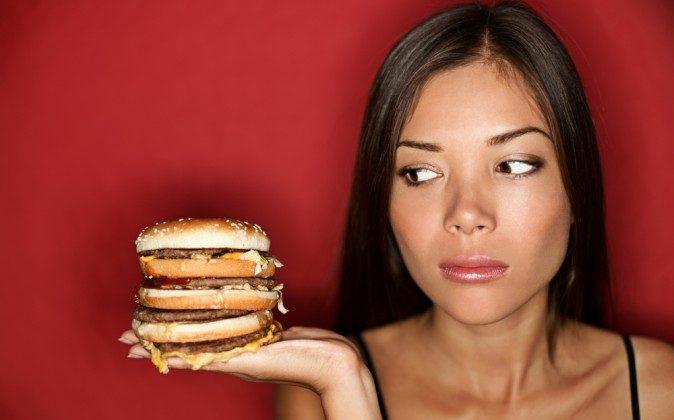First know the difference between a portion and a serving. A portion is the amount of food you choose to eat. A serving is a standard amount used by food companies to help provide a guideline about how much to eat and identify how many calories and nutrients are in a serving of a particular food.
Now determine how many servings are in your portion. Albeit simplified,the bottom line is calories in vs. calories out. Exercise is definitely important for weight management, but ask anyone—who has lost weight and successfully kept it off about their strategy, and they’re sure to mention portion control! The portions you serve to yourself can make or break your weight loss efforts.
Accurately size up your portions.
The size of your fist = A medium fruit, one cup of rice or pasta
The size of your thum = One ounce of cheese
The tip of your thum = One teasppon of butter, oil, or nut butter
A deck of cards = One serving of meat, poultry, or fish
One cupped handful = One serving of cereal, chips, or pretzels
Two golf balls = One serving mashed potato or ice-cream
Overcome Overeating with these Quick Tips
- Figure out how much you have been eating. Pour your cereal into a bowl as usual and then pour it into a measuring cup. How many cups of cereal are you eating daily? Use the guidelines above to make comparisons on the portions you normally eat and what would be healthier choices.
- Buy an inexpensive food scale and measure out your food for a week. You may be surprised to find out what a healthy portion looks like. As you readjust your thinking about portions, you will be better able to identify a healthy portion.
- Forget about cleaning your plate. Portion out less and stop eating when you begin to feel satiated. It takes your stomach some time to catch up to what you are eating, so eat slowly.
- Trick yourself. Use a smaller plate so it looks like you have more food on it. One cup of food on a small plate is going to look like more food than it would on a bigger plate. Use small glasses too.
- If you find yourself hungry and want to increase your portions, do so with the good stuff like fruits and veggies. They’re low in calorie density, so you can eat fruits and veggies in bigger volumes and it may reduce overeating. Decrease your intake of high calorie and empty calorie foods. No one is going to tell you that you can’t have a big bowl of broccoli. Just don’t eat your broccoli loaded with butter or cheese.
- Don’t drink large caloric drinks.Liquid calories don’t trip our satiety mechanisms and often don’t register in our mind as part of our daily calories, so skip the huge “big gulp” soda pop at the gas station or the extra-large Mocha with whipped topping for breakfast.
- Understand what triggers you to overeat. Try and catch yourself before it happens and make a different, healthier decision instead. Do a workout, take a walk, read a good book, or chat with a friend on the phone.
- Restaurants serve foods that are calorie-dense and in large portions. When you order your meal, ask for ½ of it in a to-go container to take home and make two meals out of it, or split your entree with one of your dining mates.
To find out more about what healthy portions look like, visit ChooseMyPlate for tips on how to eat less when you are eating out.
Choosing smaller portions can be the decision that ultimately helps you lose weight and keep it off for good!






Friends Read Free